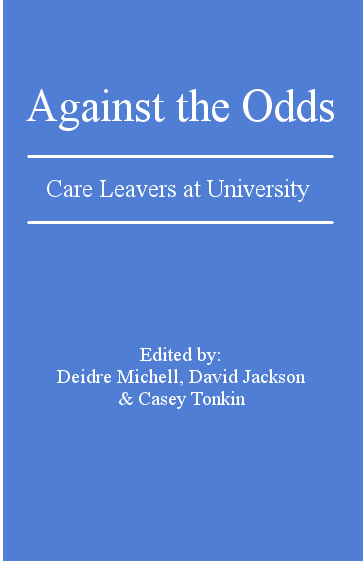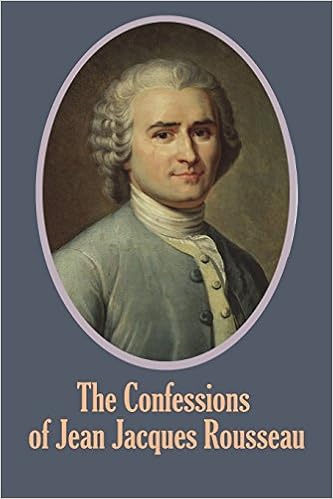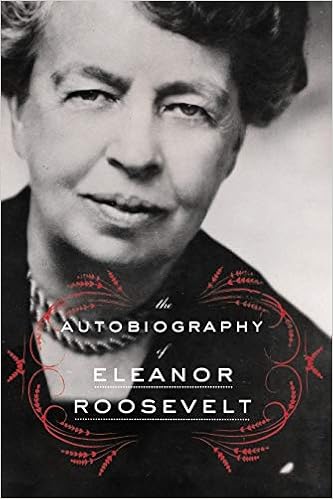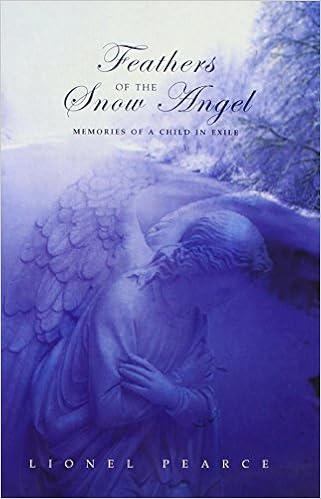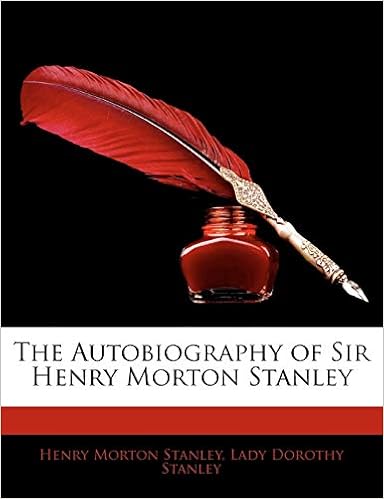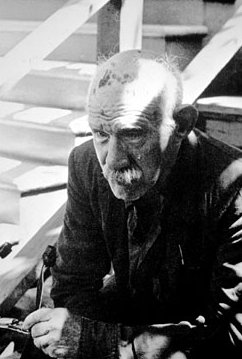Search Results
5677 results found with an empty search
- To Learn is to Live: Education Nourishes Self-Worth
Autobiography/Memoir To Learn is to Live: Education Nourishes Self-Worth Gregory P Smith 2015 Gregory was born in 1955 and taken to an orphanage by his mother in 1965. He was abused while in the orphanage and ran away many times. In this chapter, Gregory explores his challenges with going to university as a mature age student. External Website
- The Confessions of Jean Jacques Rousseau
Autobiography/Memoir The Confessions of Jean Jacques Rousseau Jean Jacques Rousseau 2018 Thought of as the first modern autobiography; in his Confessions Jean-Jacques Rousseau tells the story of his life, from the formative experience of his humble childhood in kinship care and then in foster care, through the achievement of international fame as novelist and philosopher in Paris, to his wanderings as an exile, persecuted by governments and alienated from the world of modern civilization. In trying to explain who he was and how he came to be the object of others' admiration and abuse, Rousseau analyses with unique insight the relationship between an elusive but essential inner self and the variety of social identities he was led to adopt. Rousseau was seen as being radical and was anti verbal lessons and instruction he believed children learnt by experience alone, which encouraged thought. Instruction is bad because it is not natural. Children should be guided how to learn for themselves. In the book (Emile) he wrote about the right way to raise children, and yet he sent all his own children, five of them to the Paris Foundling Hospital immediately upon birth. He never knew or even saw them. He says that at the time he was not troubled by his conscience and the only reason he did not boast openly of his actions was to save the feelings of his mistress (the mother), who did not agree with the decision. He claimed abandoning one’s children at the Foundling Hospital was “the custom of the country” as told by the “fundamentally decent” men at the dining establishments he frequented. He regarded children as a considerable inconvenience, abandoning them was a socially acceptable way to relieve oneself of it, problem solved. Rousseau eventually was troubled by his conscience about the way he had disposed of his children. He considered making a public confession at the start of Emile, but thought better of it. A baby at the Paris Foundling Hospital had only a two thirds chance of surviving its first year and only a five percent chance of reaching maturity. These are facts which Rousseau could have determined without much difficulty if he had bothered to find. This brings into question his thoughts about children when he had so little love, compassion and caring for his own. External Website
- Nobody's Child: The True Story or Growing up in a Yorkshire Children's Home
Autobiography/Memoir Nobody's Child: The True Story or Growing up in a Yorkshire Children's Home G J Urquhart 2020 Not yet four years old, Gloria was forcibly separated from her baby brother Kevin and entered into the often-brutal world of the Rothwell Children's Home, where she found occasional moments of caring among the toughest of environments. In this book, we move through Gloria's childhood and learn of the deep friendship of two 'aunts' she meets during the fostering process, the twists and turns in her search for Kevin, her nervous breakdown and her incarceration in an old Victorian-style institution where Gloria is visited by two unfamiliar relatives, with whom she is forced to live. Aged twenty-one, Gloria starts independent living, allowing her to re-establish her friendship with her aunts, who reveal her father's identity. True love then follows as she meets and marries Robert Urquhart, who supports her unwaveringly in her desperate and passionate quest to find her brother. This powerful memoir sheds light on what life was like in a 1950s children's home and follows the author on her compelling journey to find happiness and a family of her own. External Website
- Unorthodox: The Scandalous Rejection of My Hasidic Roots
Autobiography/Memoir Unorthodox: The Scandalous Rejection of My Hasidic Roots Deborah Feldman 2012 Now a Netflix original series! Unorthodox is the bestselling memoir of a young Jewish woman's growing up in kinship care as a member of an ultra orthodox Jewish group. As a member of the strictly religious Satmar sect of Hasidic Judaism, Deborah Feldman grew up under a code of relentlessly enforced customs governing everything from what she could wear and to whom she could speak to what she was allowed to read. Yet in spite of her repressive upbringing, Deborah grew into an independent-minded young woman whose stolen moments reading about the empowered literary characters of Jane Austen and Louisa May Alcott helped her to imagine an alternative way of life among the skyscrapers of Manhattan. External Website
- Orphaned by the Colour of My Skin: A Stolen Generation Story by Mary Terszak
Autobiography/Memoir Orphaned by the Colour of My Skin: A Stolen Generation Story by Mary Terszak Mary Terszak 2008 Orphaned by the Colour of My Skin (2008) by Mary Terszak weaves together auto-ethnography and archival evidence to tell the story of Terszak's removal from her family at the age of 2 in the context of the broader history of Aboriginal 'protection' in Australia. Terszak uses herself as a case study and includes a comparison of her situation with that of non-Aboriginal children who were also removed from families and institutionalised. External Website
- A Little Bit Wicked: Life, Love, and Faith in Stages
Autobiography/Memoir A Little Bit Wicked: Life, Love, and Faith in Stages Kristen Chenoweth 2010 An adoptee, in this memoir American actor Kristin Chenoweth tells her story of becoming a beauty queen and a Broadway star. Raised by an engineer and a nurse, Kristin was singing at Baptist conventions from the age of 12. External Website
- Stumbling Forwards - Understand Backwards
Autobiography/Memoir Stumbling Forwards - Understand Backwards Rob Watts 2015 Rob Watts is an Australian sociologist. In this chapter he talks about his experience finding out he was adopted as an adult, and that until he was adopted, he was in foster care with his adoptive parents. External Website
- Half and Half: The Memoirs of a Charity Brat 1908-1989
Autobiography/Memoir Half and Half: The Memoirs of a Charity Brat 1908-1989 Charles Nalden (autobiography) Born in 1908, he spent a grim, almost Dickensian childhood in London's Foundling Hospital. At 14, the Army was the only option, and he found himself, in uniform, working towards a career as a bandmaster. The whole story, much of it heart-rending, would eventually be revealed in an autobiography, Half and Half: The Memoirs of a Charity Brat 1908-1989. When it was time to leave England, Nalden chose New Zealand over India and Germany, opting for an academic life over that of a bandmaster. External Website
- Autobiography of Eleanor Roosevelt
Autobiography/Memoir Autobiography of Eleanor Roosevelt Eleanor Roosevelt 2014 A candid and insightful look at an era and a life through the eyes of one of the most remarkable Americans of the twentieth century, First Lady and humanitarian Eleanor Roosevelt.The daughter of one of New York's most influential families, niece of Theodore Roosevelt, and wife of President Franklin Delano Roosevelt, Eleanor Roosevelt grew up in the kinship care of her grandmother. She witnessed some of the most remarkable decades in modern history, as America transitioned from the Gilded Age, the Progressive Era, and the Depression to World War II and the Cold War.A champion of the downtrodden, Eleanor drew on her experience and used her role as First Lady to help those in need. Intimately involved in her husband's political life, from the governorship of New York to the White House, Eleanor would eventually become a powerful force of her own, heading women's organizations and youth movements, and battling for consumer rights, civil rights, and improved housing. External Website
- Taking Flight: From War Orphan to Star Ballerina
Autobiography/Memoir Taking Flight: From War Orphan to Star Ballerina Michaela Deprince 2014 Michaela DePrince was known as girl Number 27 at the orphanage, where she was abandoned at a young age and tormented as a "devil child" for a skin condition that makes her skin appear spotted. But it was at the orphanage that Michaela would find a picture of a beautiful ballerina en pointe that would help change the course of her life.Michaela DePrince was known as girl Number 27 at the orphanage, where she was abandoned at a young age and tormented as a "devil child" for a skin condition that makes her skin appear spotted. But it was at the orphanage that Michaela would find a picture of a beautiful ballerina en pointe that would help change the course of her life. At the age of four, Michaela was adopted by an American family, who encouraged her love of dancing and enrolled her in classes. She went on to study at the Jacqueline Kennedy Onassis School at the American Ballet Theatre and is now the youngest principal dancer with the Dance Theatre of Harlem. She has appeared in the ballet documentary First Position, as well as on Dancing with the Stars, Good Morning America, and Nightline. In this engaging, moving, and unforgettable memoir, Michaela shares her dramatic journey from an orphan in West Africa to becoming one of ballet's most exciting rising stars. External Website
- Freedom of Angels: Surviving Goldenbridge Orphanage: Childhood in Goldenbridge Orphanage
Autobiography/Memoir Freedom of Angels: Surviving Goldenbridge Orphanage: Childhood in Goldenbridge Orphanage Bernadette Fahy 1999 At age seven, Bernadette Fahy was delivered with her three brothers to Goldenbridge Orphanage. She was to stay there until she was sixteen. Goldenbridge has come to represent some of the worst aspects of childrearing practices in Ireland of the 1950s and 1960s. Seen as the offspring of people who had strayed from social respectability and religious standards, these children were made to pay for the 'sins' of their parents. Bernadette tells of the pain, fear, hunger, hard labour and isolation experienced in the orphanage. Now trained and working as a counsellor, she has had to dig deeply into her past to understand the patterns laid down by her upbringing. She has had to rebuild her life, and now she helps others to do the same. External Website
- Feathers of the Snow Angel: Memories of a Child in Exile
Autobiography/Memoir Feathers of the Snow Angel: Memories of a Child in Exile Lionel Pearce 2002 Lionel Pearce was orphaned at a young age and was brought to Australia under the Fairbridge scheme. He grew up in the Fairbridge Farm School in Western Australia and after working as a farm laborer and serving in the Army during the war, he returned to study, eventually becoming a medical practitioner. His mother's death, his rejection by her family and his institutionalism left him damaged and vulnerable. External Website
- The Autobiography of Sir Henry Morton Stanley
Autobiography/Memoir The Autobiography of Sir Henry Morton Stanley Henry Morton Stanley Stanley et al. 2010 This is a reproduction of a book published before 1923. It tells the story of John Rowlands who was in kinship care, foster care and the workhouse in Wales before he made his way to America as a cabin boy. External Website
- Autobiography of Maxim Gorky: My Childhood, in the World, My Universities
Autobiography/Memoir Autobiography of Maxim Gorky: My Childhood, in the World, My Universities Maxim Gorky 2001 Maxim Gorky, like Leo Tolstoy, was primarily an autobiographical author, and the material here is considered amongst the greatest of his writings. Not only do they give the astonishingly varied life of Gorky from his childhood in kinship care, but they also provide us with an unforgettable picture of one of the most crucial generations in Russian life and history of the late 19th and early 20th centuries. The autobiography begins at the age of five and ends with Gorky secure in his position as one of the leading Russian writers. External Website
- Enuring Stuggle: St Mary's Tardun Farm School
Academic Books & Book Chapters Enuring Stuggle: St Mary's Tardun Farm School David Plowman 2003 Between 2002 and 2009, Professor David Plowman was Chair of the Child Migrants of Malta (C-MOM) organisation which raised awareness of this demographic and was involved in successfully lobbying for memorials in Malta and Fremantle, Western Australia. In 2003, he published a history of the Tardun Farm School, an agricultural school run by the Christian Brothers from 1928. The school took in child migrants from Britian and Malta as well as boys who were wards of the Western Australian state. David Plowman's history includes discussion of child migrants at the school as well as the Christian Brothers' attitude to education. External Website
- Dreams from My Father: A Story of Race and Inheritance
Autobiography/Memoir Dreams from My Father: A Story of Race and Inheritance Barack Obama 2004 This memoir begins in New York, where Barack Obama learns that his father—a figure he knows more as a myth than as a man—has been killed in a car accident. This sudden death inspires an emotional odyssey—first to a small town in Kansas, from which he retraces the migration of his mother’s family to Hawaii, and then to Kenya, where he meets the African side of his family, confronts the bitter truth of his father’s life, and at last reconciles his divided inheritance. On the way through he talks about living with his maternal grandparents. External Website
- Henry Darger
Artists Henry Darger Henry Joseph Darger Jr. (; c. April 12, 1892 – April 13, 1973) was an American writer, novelist and artist who worked as a hospital custodian in Chicago, Illinois. Henry was four when his mother died and after his father was hospitalised, the boy was moved first to an orphanage and then to an asylum for children with disabilities. Darger has become famous for his posthumously discovered 15,145-page, single-spaced fantasy manuscript called The Story of the Vivian Girls, in What Is Known as the Realms of the Unreal, of the Glandeco-Angelinian War Storm, Caused by the Child Slave Rebellion, along with several hundred drawings and watercolor paintings illustrating the story.The visual subject matter of his work ranges from idyllic scenes in Edwardian interiors and tranquil flowered landscapes populated by children and fantastic creatures, to scenes of horrific terror and carnage depicting young children being tortured and massacred. Much of his artwork is mixed media with collage elements. Darger's artwork has become one of the most celebrated examples of outsider art. External Website
- Follow the Rabbit-Proof Fence
Autobiography/Memoir Follow the Rabbit-Proof Fence Doris Garimara Pilkington 2002 This story is based on the actual experiences of three girls who fled from the repressive life of Moore River Native Settlement, following along the rabbit-proof fence back to their homelands. Assimilationist policy deemed these girls were taken from their kin and their land in order to be made white. Never having seen the ocean before, the three girls' experience of transportation by boat to the settlement was tormenting. Settlement life was unbearable with its chains and padlocks, barred windows, hard cold beds and horrible food. Solitary confinement was doled out as regular punishment. They were not even allowed to speak their language. External Website
- The anti cool girl
Autobiography/Memoir The anti cool girl Rosie Waterland 2015 With two addicts for parents, Rosie grew up amidst rehab stays, AA meetings, overdoses, narrow escapes from drug dealers, a merry-go-round of unsavoury men in her mother's life, foster and kinship care. As an adult, trying to come to grips with her less than conventional childhood, Rosie navigated her way through eating disorders, nude acting roles, mental health issues and awkward Tinder dates. External Website
- Among the Porcupines
Autobiography/Memoir Among the Porcupines Carol Matthau 1992 Carol Matthau, nee Grace who wrote The Secret of the Daisy (1956). Illegitimate daughter of actor Leslie Howard. The former society woman describes her childhood in foster homes; her transformation into a debutante; her marriages to William Saroyan and Walter Matthau; and her friendship with Capote, Gloria Vanderbilt, Oona O'Neill Chaplin, Rex Harrison, and others. External Website

